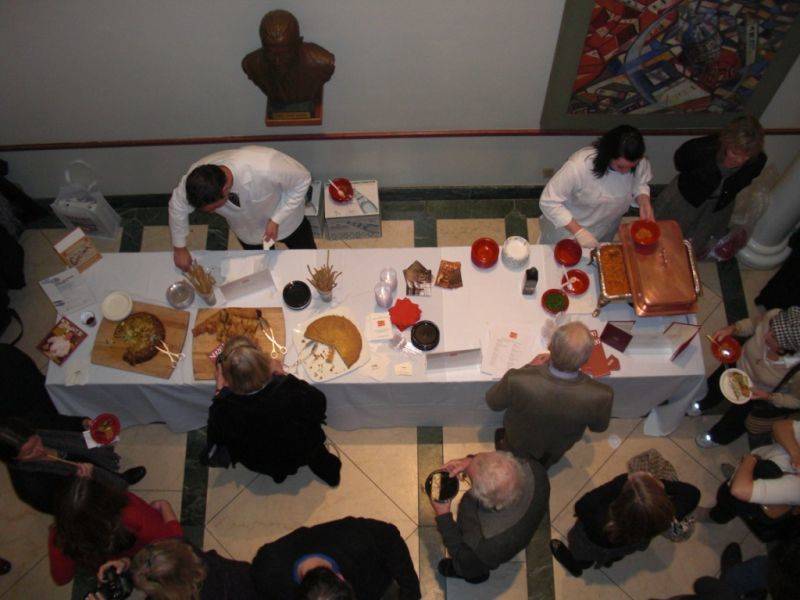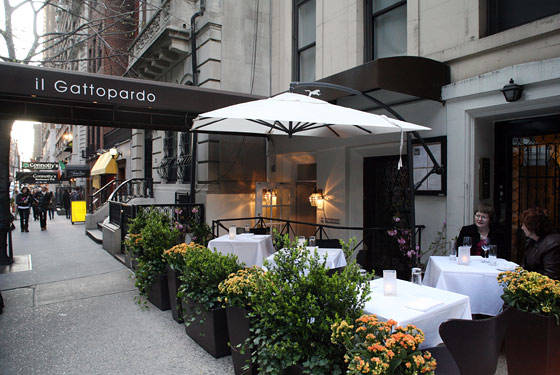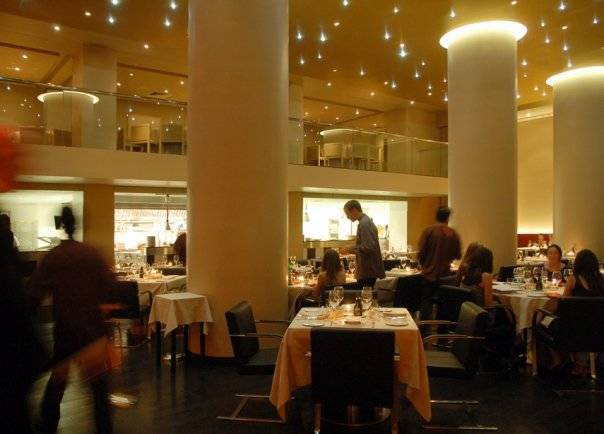Is Italian Cuisine a Victim of its Own Success?
The event was promising and gluttonous. Our taste buds were satisfied by the delicacies offered by DS26 and Il Gattopardo, two top restaurants in New York. But we will have to wait for the rest of the season for the promises to be fulfilled as this was only a preview.
What are we talking about? Genuinely Italian, the long-awaited marriage between Casa Italiana Zerilli-Marimò and Gruppo Ristoratori Italiani (GRI). So we can therefore say that we attended a wedding feast dedicated to Italian flavor. It was inevitable that this meeting with prominent promoters of Italian culture in America would happen sooner or later, and indeed we wonder why it took so long!
GRI was founded three decades ago with the mission to promote Italian gastronomic culture in New York and the rest of the United States through the joint effort of Italian restaurateurs to overcome competitiveness and to contribute to a common cause: to initiate a dialogue with American consumers and teach them to appreciate authentic, traditional Italian cuisine. It was as necessary then as it is now to draw an audience, knowing that if clients were satisfied with their experiences at an Italian restaurant, they would probably decide to try another, helping to foster interest in Italian cuisine and to expand the market for everyone. Today there are as many as 800 members of the Gruppo Ristoratori Italiani, mostly located in New York.
What really is Italian food? What are the magical ingredients, the techniques, and the secrets that make it so special? These are the questions that have always stimulated the “gastronomic imagination” of Americans and which Casa Italiana and GRI want to answer. And the most common and decisive response is that “the secret is in the raw materials.” Tony May, owner of San Domenico and DS26 restaurants, and founder of the GRI, along with Gianfranco Sorrentino, president of GRI and owner of the restaurant, Il Gattopardo, cannot help but repeat it over the course of the presentation.
The quality of ingredients makes a difference, and it is true that raw materials outside of Italy are expensive because labor costs and quality are valuable. But it is equally true that they are essential elements on which the success of a recipe depends.
In a friendly and warm atmosphere away from a cold New York December, the evening’s guests, members, and supporters of both associations along with journalists were able to discover through a glass of wine and a sampling of excellent food the qualities that connect the events’ participants: a commitment to promote and preserve the distinctive character of Italy.
How? Through education. The primary mission of GRI is to invest in the education of the public and stakeholders. “We must teach young people in the field the importance of products, to make them understand the difference between each product and between originals and imitations.” Tony May added that it was this education that comes from the attention to detail and the development of culinary arts.
The preparation of young professionals in the field, Gianfranco Sorrentino tells us, also involves a trip offered each year to seven young students from culinary institutes, which enables them to enjoy full immersion in the food and wine of an Italian region. This is because young people today are not only the chefs of tomorrow, but also future journalists, writers, and consumers.
GRI works to promote its activities through many members and associates and through many events taking place in the United States during the year. The most important is indisputably Vino e Cucina, an event which brings together 600 participants, including restaurateurs and corporate caterers who sample typical products which are then awarded prizes of excellence.
What about the project that connects GRI and Casa Italiana Zerilli-Marimò?
Casa Italiana’s director, Stefano Albertini, tells us more about it. Even the name of this project is an entire program in itself: “Italian Cuisine: A Victim of its Own Success?”
The project will consist of a series of events, lectures, presentations, and a final seminar devoted to the debate on the culture of Italian food and wine which will bring participants into the real world of cooking in the bel Paese in America today.
Specifically, the theme of interpreting Italian cooking in America that prompted the most questions from audience members in this auditorium. How and why does Italian-American cuisine deviate from the original? The answer comes from the past. The first Italians who arrived in the New World did not have access to the essential raw materials to continue their food traditions. Only today, thanks to a widespread and extensive distribution network, can we afford to be loyal and more uncompromising.
But even in Italy today cuisine has changed. To begin with, cooking is no longer done with animal fats but rather with vegetable oils. The cooking time of food has been significantly reduced and there is more of a demand for a light and healthy diet.
At the same time, Americans have started to buy and acquire typical Italian products and learn to prepare them, even though this is still an ongoing process that is slow and involved.
On one final note, there was a bit of controversy to conclude the debate on innovation. In ranking the best Italian restaurants in America, there are very few authentic Italian restaurants on the list. According to Tony May, this is perhaps due to geographical distance and so American chefs have a lot more freedom to experiment than their colleagues abroad. Americans chefs study and work for longer periods of time in Italy and once they return home they apply the knowledge gained without fear of innovation.
In short, we need to follow the next season of events to see if the marriage works out and whether we can truly say...and they lived happily ever after.
Translation by Giulia Prestia











































i-Italy
Facebook
Google+
This work may not be reproduced, in whole or in part, without prior written permission.
Questo lavoro non può essere riprodotto, in tutto o in parte, senza permesso scritto.